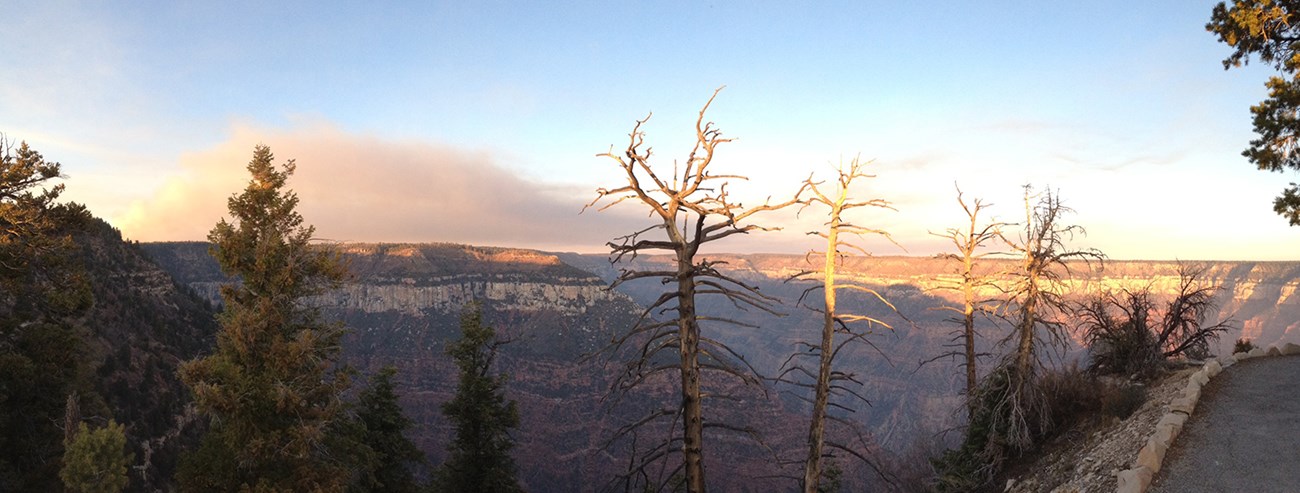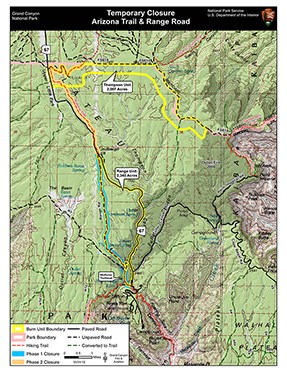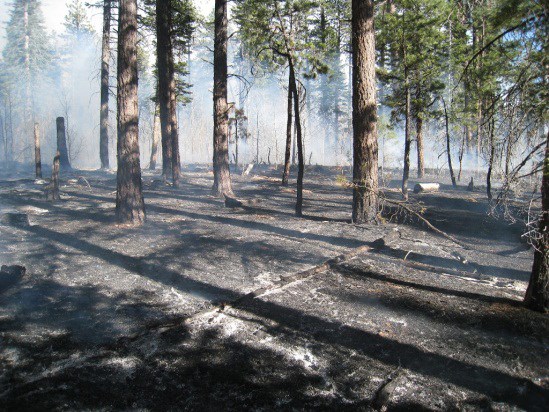Last updated: January 25, 2017
Article
Successful North Rim Prescribed Fires at Grand Canyon

NPS / Michelle Fidler
In early November 2012, North Zone interagency fire managers completed ignitions on the Range and Thompson prescribed fires. Approximately 2,300 acres were treated in the Range burn unit and approximately 2,350 acres were treated in the Thompson unit. Fire managers employed both hand and aerial ignitions in both units. Initial post-treatment observations indicate that goals and objectives for both fires were met.

In addition to maintaining the natural role of fire in a fire-adapted ecosystem, these fires:
- reduced the heavy buildup of dead and down vegetation in both burn units, decreasing the risk of extreme fire behavior in the future, especially along Highway 67, the North Rim's primary exit route.
- created defensible space around sensitive cultural resources and along the park-forest boundary. In the event of future wildfires in the area, this will aid in the protection of sensitive cultural resources within the burn units and threatened and endangered species habitat adjacent to the boundary, including that of Apache trout and Mexican spotted owl.
- protected and enhanced Mexican spotted owl habitat within the park by reducing the risk of a stand-replacing fire destroying habitat and by creating new snags and coarse debris to enhance Mexican spotted owl habitat.

NPS / Michelle Fidler
The Range and Thompson prescribed fires were jointly managed by the National Park Service and the U.S. Forest Service. Approximately 80 personnel from both agencies worked on the fires, and as a result of strong and effective collaboration, the two agencies were able to seamlessly treat acres across jurisdictional boundaries.
The National Park Service and U.S. Forest Service would like to thank park visitors and community members for their patience and understanding during management of these two fires. Temporary road and trail closures significantly enhanced both firefighter and visitor safety. Smoke impacts during prescribed fires can be managed and mitigated to a far greater extent than those created by a wildfire. The two agencies would also like to thank the Arizona Department of Environmental Quality for their extended commitment to collaboratively planning these fires.
Contacts: Ed Hiatt, North Zone fire management officer
Email: e-mail us
Phone: (928) 643-8101
